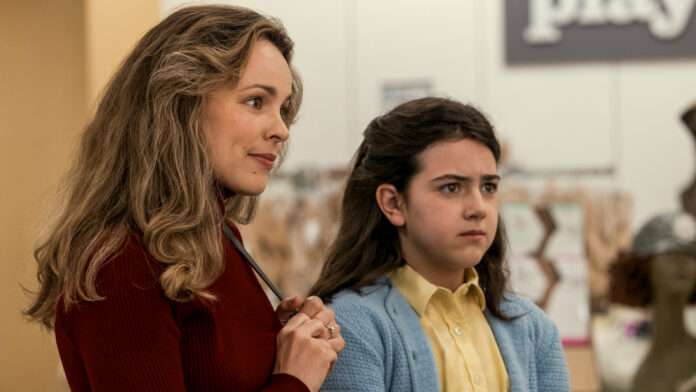On this Mother’s Day, Judy Blume’s Are You There God? It’s Me, Margaret has finally come to the big screen, and so has the ever-important mother-daughter relationship.
Margaret Simon, the 11-year-old protagonist in Judy Blume’s 1970 young adult novel, Are You There God, It’s Me, Margaret, is looking for answers. It’s a relatable quest today, too.
The plot, which I had only remembered in bits and pieces, despite having read the book at least a million times before I turned 13, all came rushing back a few weeks ago as I sat in a theater filled mostly with women of a certain age and their eye-rolling daughters on a warm Los Angeles Sunday morning in Universal City. The bustle of the post-covid crowds entering the theme park just outside was silenced by the cold, dark theater and the struggles happening half a century ago to the tween on the screen, played brilliantly by Abby Ryder Fortson.
Margaret struggles through the challenges coming of age brings — changing bodies, intense emotions, crushes, and peer pressure. All of that is sandwiched between school pressures and family drama; there’s a major move, a guilt-tripping grandmother, and the emergence of grandparents Margaret has never met. Margaret’s mother, Barbara (Rachel McAdams), fell out of touch with her parents when she married Herb Simon (Benny Safdie) — a Jewish man. As a result, Margaret is raised without religion — just one more identity crisis she has to navigate, especially when it’s assigned as a project by her teacher, Mr. Benedict (Echo Kellum).
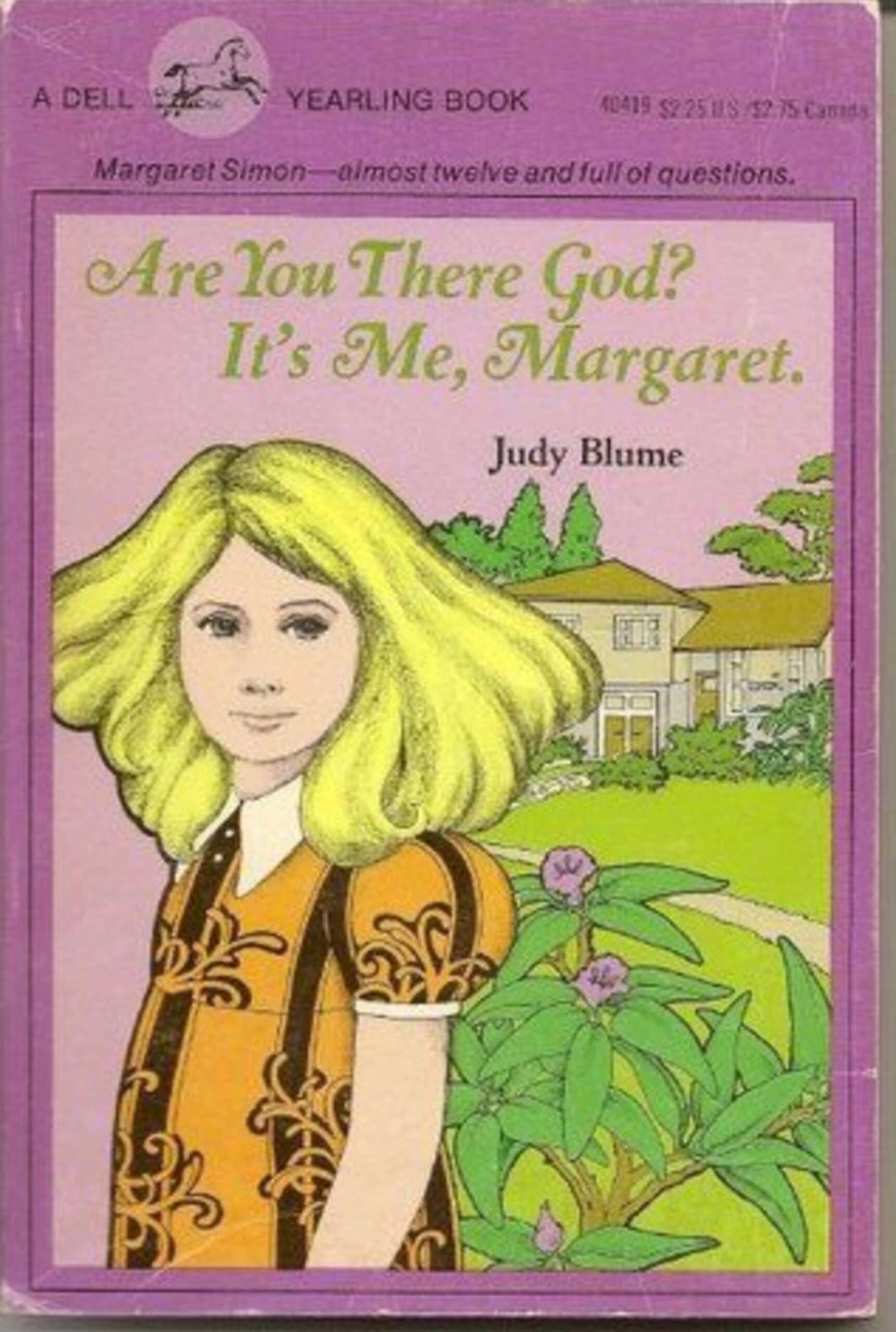
I was seated there next to my soon-to-be-ten-year-old daughter alongside her two friends and their moms. It was a pre-Mother’s Day pilgrimage of sorts as I found myself both tightening and loosening the grip on my daughter just a bit more as the gap narrows in on what I can only assume will be many tween meltdowns —a result of the modern pressures both a world away from young Margaret’s challenges, and in so many ways, indistinguishable.
As a child reading Blume’s Margaret, I often imagined the character as a real girl. We’d have been fast friends, I thought, united in our awkwardness, our misaligned crushes, our lost faith in faith, among other things. Unlike Margaret, an only child, I was the oldest of four – a kind of solitude in its own right. Those few quiet moments that I could steal away and hide behind a book were sacred escapes from the responsibilities that being the eldest brought, especially following my parents’ separation. Those moments in Margaret’s equally frustrating world fueled a developing fortitude and sense of self-reliance that I carry to this day.
The need for that self-inquiry was something Blume understood astutely and conjured in the book’s most captivating moments when Margaret talked to “God” — which is to say, she talked to no one in particular except of course, herself.
All of this hit me in a new way as I watched my daughter squirming in her seat, nervously gnashing Sour Patch Kids as she tried to avoid the screen during the film’s awkward moments, like when Margaret spends two minutes in the closet with Philip Leroy (Zack Brooks) or when the girls (repeatedly) discuss bras and periods, periods and bras, and of course, Philip Leroy.
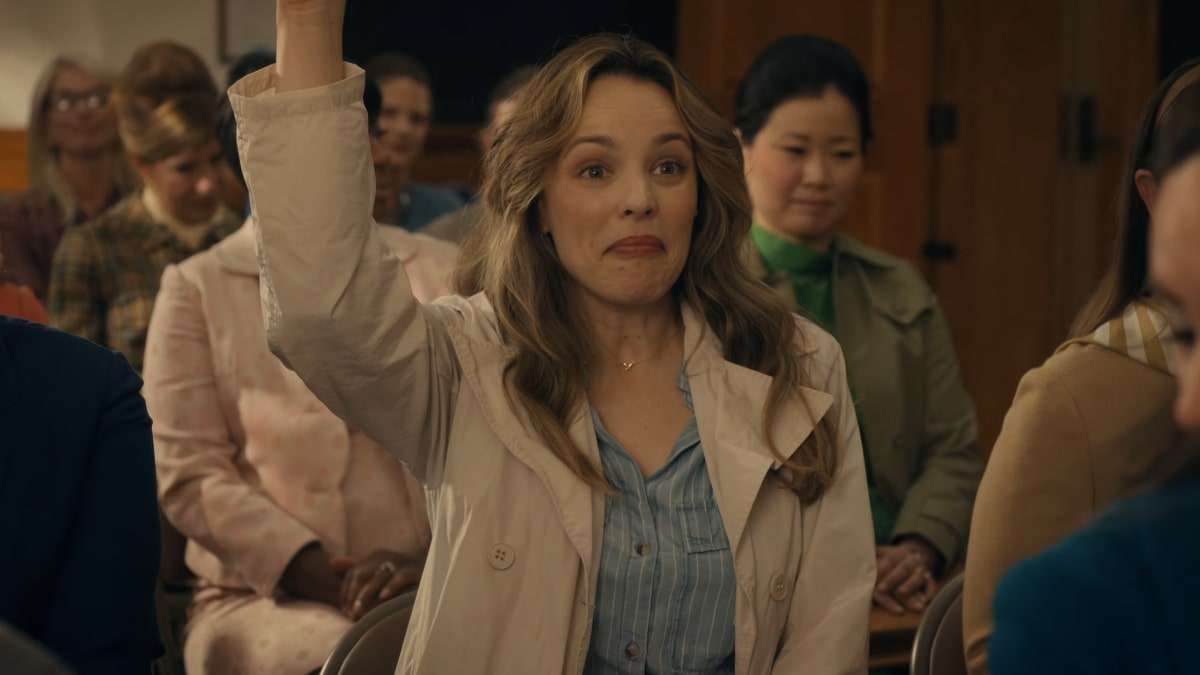
Margaret struggles to communicate with her parents about most things even despite the family’s refreshing departure from the parenting playbook of the time. “I want a bra!” Margaret blurts out awkwardly to her mother. If Margaret stiffens up when discussing bras with the breezy Barbara, what then, I feared, will it be like for my daughter to broach awkward subjects with me?
Are You There God was first published in 1970 (and it’s never gone out of print since). While in 1970 Margaret’s main identity crisis hinged on religion, a modern-day Margaret might find herself questioning a catalog of other concerns like whether it was safe to identify as trans, gay, or non-binary without facing criminal charges for using the “wrong” bathroom.
There’s also another possible scenario a few years into Margaret’s fictional future that I couldn’t help but reflect on. By 1973, Roe vs. Wade would have protected Margaret and her New Jersey suburbanite besties from being forced into early motherhood. But fast forward to today, and had the Simons moved to one of thirteen other states including Texas, Oklahoma, or Mississippi instead of New Jersey, and Margaret could have been a parent herself before graduating high school. Are you there, God? She most certainly would have pleaded in earnest. No doubt, so would have her mother.
Margaret would have also faced “safe shelter drills” like my daughter experiences frequently — learning how to hide from people with guns. I couldn’t help but find myself longing for Margaret’s mass-shooter-free world. Even with all of the challenges young people faced in the 1970s, nothing compares to today’s risk of gun violence in schools.
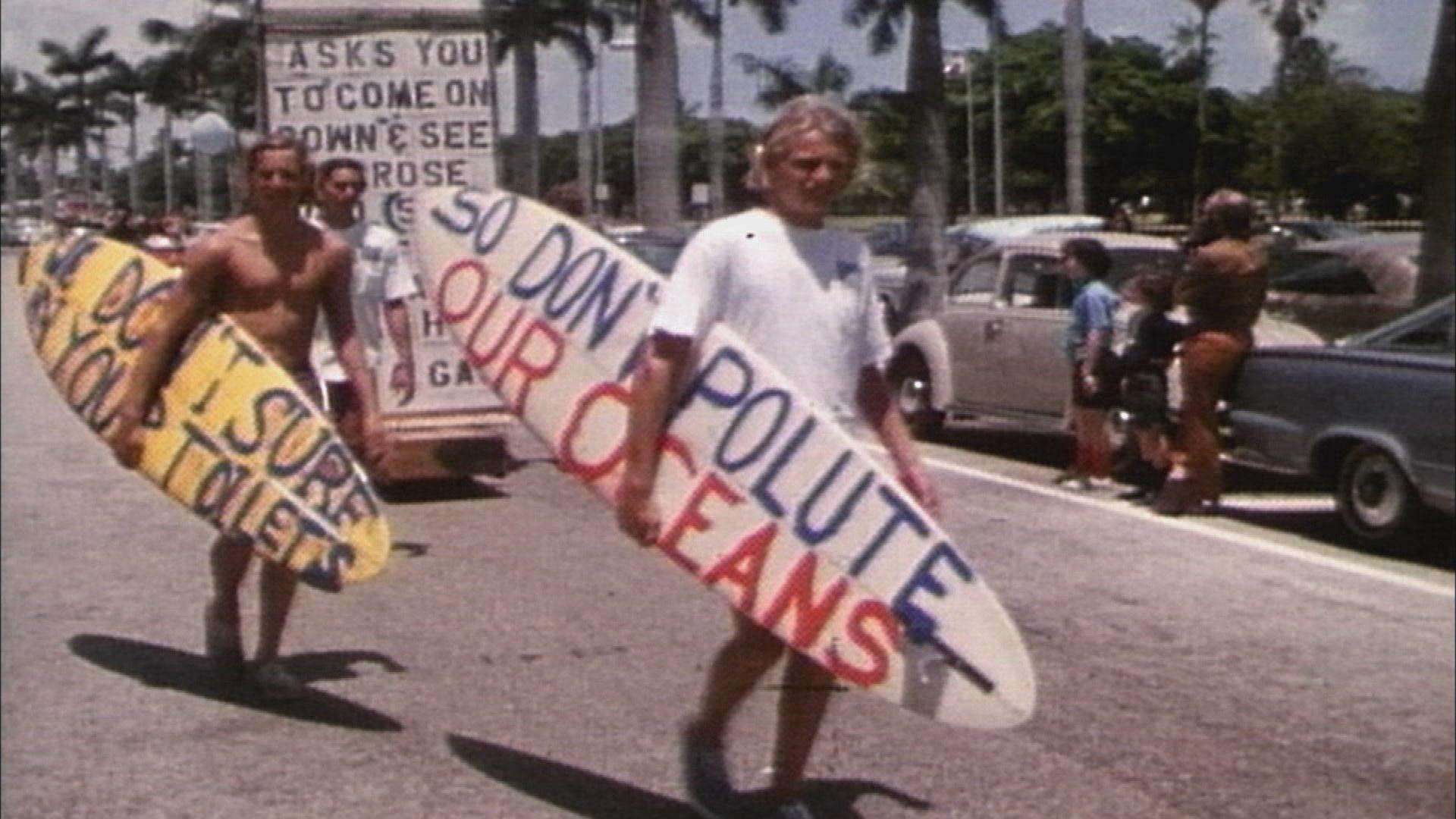
The very first Earth Day was celebrated in 1970. While Margaret may have been concerned about the Vietnam War, today’s teens are increasingly concerned about the looming climate crisis. Recent research found that more than half of young adults and teens said they were very or extremely worried about climate change and more than 45 percent said their feelings about climate change are negatively impacting their daily lives.
My daughter’s world is so different from Margaret’s, I thought, as I reflected on all of this ahead of my tenth Mother’s Day. I’ve long avoided labels (a label all its own, I suppose). But, as feminism and environmentalism met up in 1970, they birthed a new era, marking a defined and urgent line in history. Being born on that side of the line, feminism and environmentalism have been the two most critical considerations that informed my own life from a young age, and, now, my parenting, too.
But what struck me most unexpectedly in revisiting Blume’s seminal telling of the time was something I had long overlooked: the role of Margaret’s mother.
As a child reading Margaret’s story, Barbara blended into the background — a Charlie Brown grown-up gurgling from another dimension. But now, a mother myself, I saw for the first time just how deeply Barbara represents not only that important time in history but also how often our lives are parallel with our children’s even if the struggles feel so completely different.
Barbara’s an artist — a freedom that mirrors Margaret’s seemingly uncomplicated childhood before the story begins. The film opens with Margaret returning from another summer spent at sleepaway camp where cares seemed to be as commonplace as skyscrapers. Barbara, too, is bright-eyed and naive about the forthcoming move across the Hudson and out of the bubble of Manhattan. A deeper dissection might reveal a parallel to the unrealistic optimism of new parents before the sleepless reality a newborn brings, or in this case, the calm just ahead of the taxing, traumatic tension of tween and teen years.
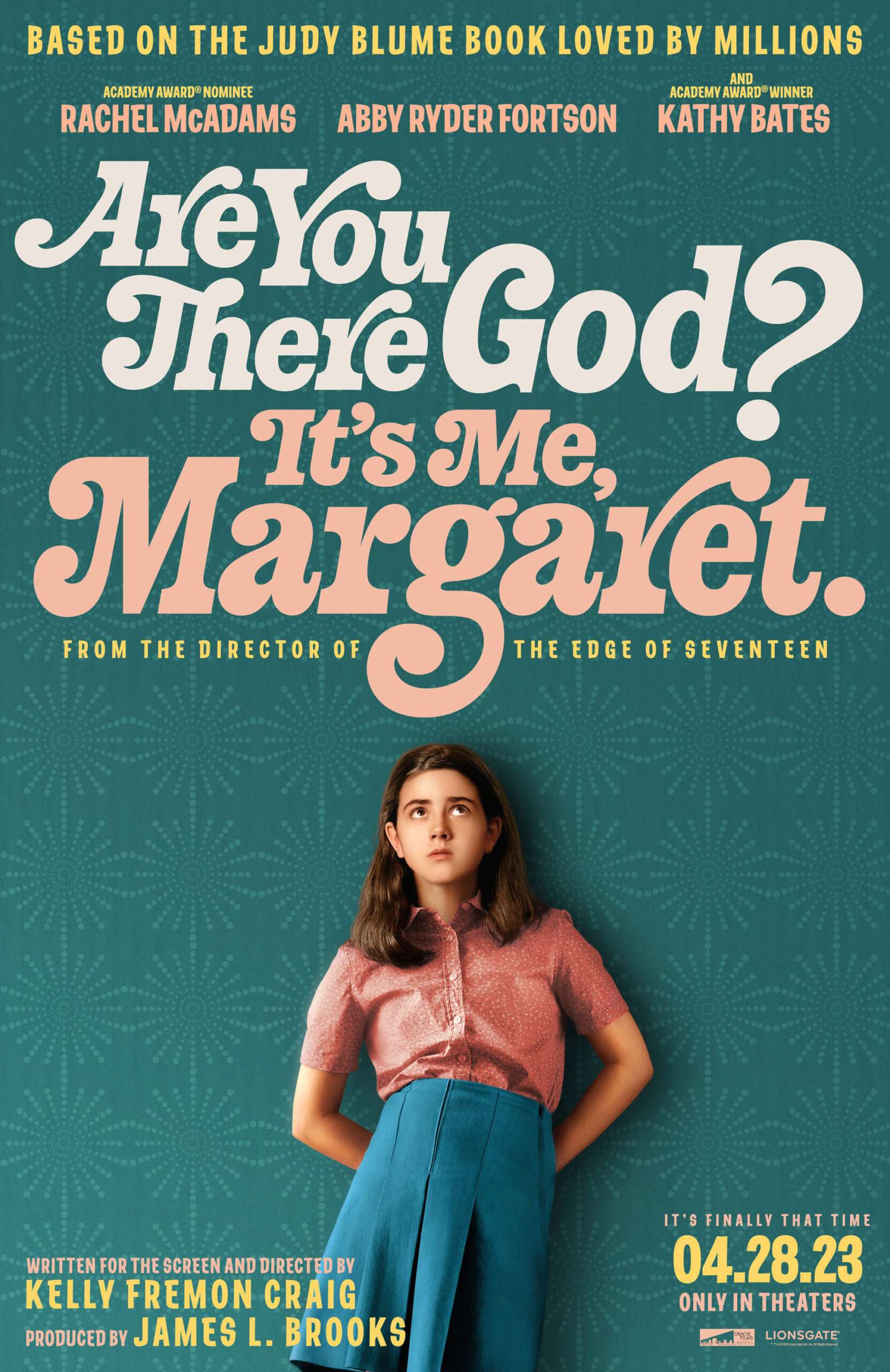
Barbara is knocked around by the ambitious, exploitive PTA — much like Margaret’s own quest for individuality amid the leanings of her overbearing peers. There’s the couchless living room (something my daughter and I related to all too well after our own recent move) — Barbara’s equivalent to Margaret’s sockless penny loafer blisters — a result of undefined peer pressure (“I’m thinking maybe something more modern,” Barbara suggests as she plows through catalog pages), but really, it’s a result of her own self-doubt. And, like Margaret, Barbara confronts her own religious questions yet again when she reluctantly reconnects with her parents.
Amid the chaos of the move, the guilt-trippings of the mother-in-law (the brilliant Kathy Bates), the smirking PTA moms, the battling grandparents, and Margaret’s meltdowns, Barbara is admirably cool. She’s not unbothered by these things by any stretch, but her ability to stay clear-headed is enviable.
It’s somewhere in that chaos, surrounded by houseplants, the digital device-free quiet, and her artwork, that Barbara teaches Margaret, and all the rest of us, the most important lesson in Blume’s story: self-reliance.
Barbara comes to accept that while a loving wife and mother she may be, her own journey doesn’t end there. And if she doesn’t reclaim her autonomy and find her way back to her true self, to her art, it seems clear she will lose the ability to be the doting mother and housewife. Unlike her young daughter, though, Barbara doesn’t need to ask an imaginary god to answer her questions. Turns out, like most mothers, she’s already got all the answers she needs.
Related on Ethos:

